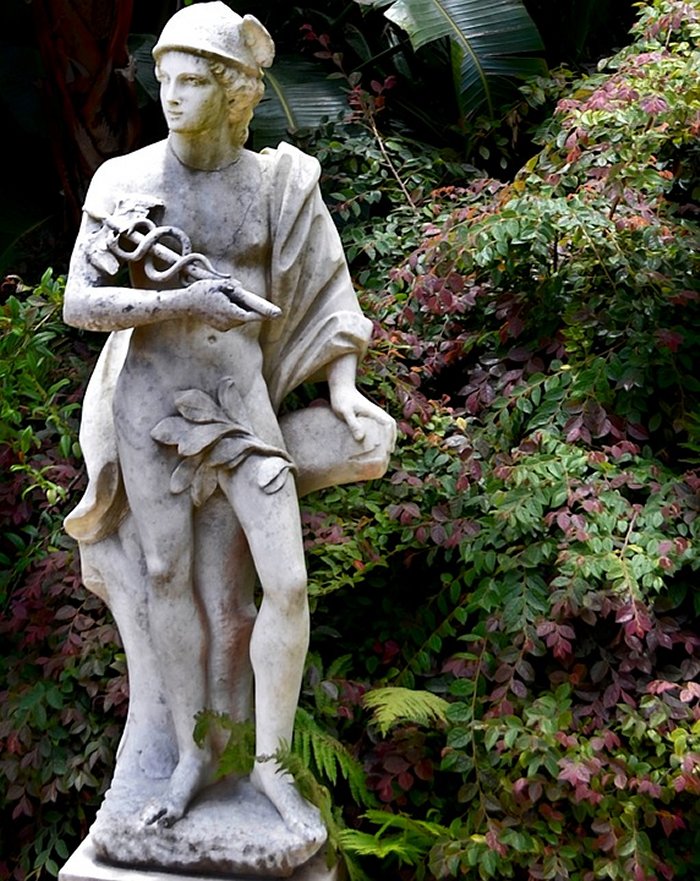Hermes – Divine Trickster, Psychopomp, Patron Of Merchants And Thieves In Greek Mythology
A. Sutherland - AncientPages.com - In Greek mythology, Hermes (Roman name: Mercury) was the emissary and messenger of the gods, the patron of shepherds and their flocks and wanderers. Hermes guarded the roads as the patron of merchants and thieves, making them safe from dangers for all passing travelers.
Greek god Hermes. Image credit: aszak - Pixabay
Like the Egyptian god Anubis, he is a psychopomp responsible for escorting newly deceased souls to the afterlife.
As the patron of commerce and merchants, Hermes was supposed to be the promoter of intercourse among nations and a skilled mediator between merchant and customer. With these skills, he was a bringer of wealth in business.
Besides many divine characteristics, Hermes has a weakness that makes him a more human-like figure. For instance, he likes to steal, and this impulse has followed him since infancy. He was the one who could quickly settle disputes thanks to his gift of eloquent speech and moved freely between the worlds of the mortal and divine.
In some myths, he is a trickster god who outsmarts other gods for his satisfaction; it is one of his characteristics that he reminds of Norse God Loki.
Birth And Family Of Hermes
He was born in a cave on Mount Cyllene in Arcadia, southern Greece. His parents were Zeus, the King of the Gods, and Maia, a daughter of the Titan Atlas and one of the Pleiades.
God council in Olympus: Hermes with his mother Maia. Detail of the side B of an Attic red-figure belly-amphora, ca. 500 BC. (Nikoxenos Painter). Image credit: Bibi Saint-Pol/Wikipedia
Hermes did not have a wife, but he had children. According to one account, he was considered the father of Odysseus's grandfather Autolycus, who was conceived when Hermes had intercourse with the virgin Chione. With the goddess Aphrodite, he had a son Hermaphroditos (Hermaphroditus), known as the deity of unions, marriage, sexuality, and fertility.
According to some versions, Hermes and Penelope became closer, and the fruity of this relationship was the god, Pan.
Appearance Of Hermes And His Attributes
Hermes was a young man, wearing traveling clothes, a flat hat known as "petasus," and winged sandals on his feet. Often, he was depicted having wings attached to his shoulders and cap.
He usually held a caduceus, a winged staff with snakes wrapped around it, in his hands so he could gain access everywhere. This staff helped Hermes to charm the gods or to wake up those who the god of sleep tamed.
Later, he was depicted as a very young boy or sometimes an elder, bearded man with the lamb thrown over his back. His other attributes were a broad hat of a wanderer covering the face, a cape, winged sandals on his feet, a palm tree, turtle, rooster, goat, the number four, several kinds of fish, and incense. Sacrifices included honey, pigs, goats, lambs, and cakes.
Hermes, The God's Messenger And Conductor Of Souls
Wearing wings on his sandals, Hermes was the speediest of all Greek gods. He enjoyed his popularity among all the Greek gods and spirits. Because of his speed, Hermes received the role of the messenger and conductor of souls to the Underworld. He was the only Olympian god authorized to visit Heaven, Earth, and the Underworld.
Statue of God Hermes. Credit: Stock photo
As the messenger of the gods, Hermes – "the divine trickster" - was sent to many places; he was, among others, at Troy, at the court of Paris, accompanying three goddesses on Mount Ida in Phrygia.
According to Carl Jung, a Swiss psychiatrist and psychoanalyst who founded analytical psychology, Hermes's role as messenger between realms and as a guide to the Underworld made him the master of the unconscious, the mediator between the conscious and unconscious parts of the mind.
Worship Of Hermes Across The Whole Greece
Originally, Hermes was worshiped in the form of piles of stones, placed along the roads and their intersections to protect travelers from dangers. Hermes was venerated as a god of nature, farmers, and herdmen in remote areas of Greece.
One of Hermes's oldest places of worship was Mount Cyllene in Arcadia, where he was born. The first temple dedicated to him was where the myth says he was born. Tradition says that by the end of the fifth century BC, Hermes had acquired many cult names and activities.
In the Hellenistic era, worship of the Greek god Hermes was combined with the cult of the Egyptian god Thoth, which gave rise to the cult of Hermes Trismegistus ("thrice-greatest Hermes").
As such, Hermes played his role in later esoteric cults.
Updated on August 24, 2022
Written by – A. Sutherland - AncientPages.com Senior Staff Writer
Copyright © AncientPages.com All rights reserved. This material may not be published, broadcast, rewritten or redistributed in whole or part without the express written permission of AncientPages.com
Expand for referencesMore From Ancient Pages
-
 Major Breakthrough: 1.4-Million-Year-Old Bones Discovered In Spain Rewrite History Of Human Evolution In Europe
Archaeology | Sep 29, 2022
Major Breakthrough: 1.4-Million-Year-Old Bones Discovered In Spain Rewrite History Of Human Evolution In Europe
Archaeology | Sep 29, 2022 -
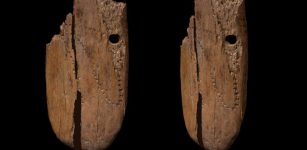 41,500-Year-Old Ivory Pendant Is The Oldest Evidence Of Humans Decorating Jewelery In Eurasia
Archaeology | Nov 26, 2021
41,500-Year-Old Ivory Pendant Is The Oldest Evidence Of Humans Decorating Jewelery In Eurasia
Archaeology | Nov 26, 2021 -
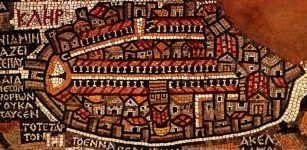 Stunning Madaba Map: Oldest Known Mosaic Built Of Two Million Stone Cubes
Civilizations | Jun 16, 2017
Stunning Madaba Map: Oldest Known Mosaic Built Of Two Million Stone Cubes
Civilizations | Jun 16, 2017 -
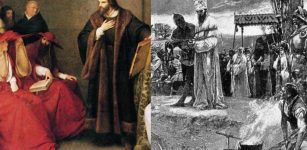 Jan Hus: Czech Reformer And Bohemian Religious Leader Was Burned At Stake For Heresy
Featured Stories | Dec 17, 2019
Jan Hus: Czech Reformer And Bohemian Religious Leader Was Burned At Stake For Heresy
Featured Stories | Dec 17, 2019 -
 Obsidian Flake From 45,000-Year-Old Tool Unearthed In Armenia
Archaeology | Jul 18, 2022
Obsidian Flake From 45,000-Year-Old Tool Unearthed In Armenia
Archaeology | Jul 18, 2022 -
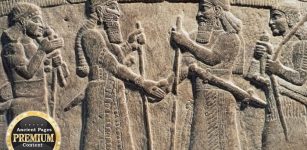 Handshaking Is An Ancient Tradition – When, Where And Why Did We Start To Clasp Hands?
Ancient History Facts | Aug 30, 2019
Handshaking Is An Ancient Tradition – When, Where And Why Did We Start To Clasp Hands?
Ancient History Facts | Aug 30, 2019 -
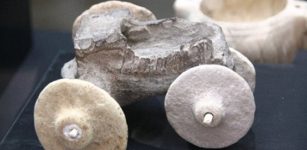 World’s Oldest Toy Car – Could This 7500-Year-Old Discovery Be The Earliest Evidence Of The Wheel?
Artifacts | Sep 1, 2018
World’s Oldest Toy Car – Could This 7500-Year-Old Discovery Be The Earliest Evidence Of The Wheel?
Artifacts | Sep 1, 2018 -
 New Paintings And Details Uncovered In The Egyptian Temple Of Esna
Places | Oct 22, 2024
New Paintings And Details Uncovered In The Egyptian Temple Of Esna
Places | Oct 22, 2024 -
 Ants May Hold the Clues Why The Human Brain Decreased In Size 3,000 Years Ago – Scientists Say
Archaeology | Oct 22, 2021
Ants May Hold the Clues Why The Human Brain Decreased In Size 3,000 Years Ago – Scientists Say
Archaeology | Oct 22, 2021 -
 ‘Tonina Chiapas’ Mayan Pyramid In Southern Mexico Is Among The Largest Yet Found
Civilizations | Oct 29, 2018
‘Tonina Chiapas’ Mayan Pyramid In Southern Mexico Is Among The Largest Yet Found
Civilizations | Oct 29, 2018 -
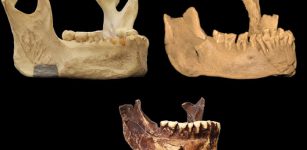 Mysterious Jawbone May Represent Earliest Presence Of Humans In Europe
Archaeology | Dec 7, 2022
Mysterious Jawbone May Represent Earliest Presence Of Humans In Europe
Archaeology | Dec 7, 2022 -
 Byzantine Greek Inscription Of Psalms 86 Found In Hyrcania
Archaeology | Sep 29, 2023
Byzantine Greek Inscription Of Psalms 86 Found In Hyrcania
Archaeology | Sep 29, 2023 -
 Secrets Of Ancient Mound Builders In Louisiana Revealed
Archaeology | May 23, 2018
Secrets Of Ancient Mound Builders In Louisiana Revealed
Archaeology | May 23, 2018 -
 Earliest Period Of Warfare In Europe Occurred Over 1,000 Years Earlier Than We Thought
Archaeology | Nov 3, 2023
Earliest Period Of Warfare In Europe Occurred Over 1,000 Years Earlier Than We Thought
Archaeology | Nov 3, 2023 -
 Ancient Mystery Of The American Southwest – Secrets Of The Cliff Dwellers – Part 1
Ancient Mysteries | Jul 23, 2018
Ancient Mystery Of The American Southwest – Secrets Of The Cliff Dwellers – Part 1
Ancient Mysteries | Jul 23, 2018 -
 Spectacular Discovery – Scientists Decipher Previously Invisible Texts In Ancient Manuscripts
News | Nov 16, 2013
Spectacular Discovery – Scientists Decipher Previously Invisible Texts In Ancient Manuscripts
News | Nov 16, 2013 -
 Ancient Roman Joke Inscribed On A 2,000-Year-Old Pen – Discovered
Archaeology | Jul 29, 2019
Ancient Roman Joke Inscribed On A 2,000-Year-Old Pen – Discovered
Archaeology | Jul 29, 2019 -
 Forgotten Notebook Reveals Da Vinci Understood Gravitiy Long Before Newton
Ancient Technology | Feb 22, 2023
Forgotten Notebook Reveals Da Vinci Understood Gravitiy Long Before Newton
Ancient Technology | Feb 22, 2023 -
 Historic Shipwreck Margaret A. Muir Found In Lake Michigan, Wisconsin
Archaeology | Jul 29, 2024
Historic Shipwreck Margaret A. Muir Found In Lake Michigan, Wisconsin
Archaeology | Jul 29, 2024 -
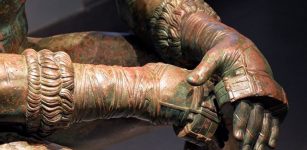 Boxer At Rest – Rare Sculpture And Masterpiece Of Hellenistic Bronze Art
Artifacts | May 21, 2021
Boxer At Rest – Rare Sculpture And Masterpiece Of Hellenistic Bronze Art
Artifacts | May 21, 2021

